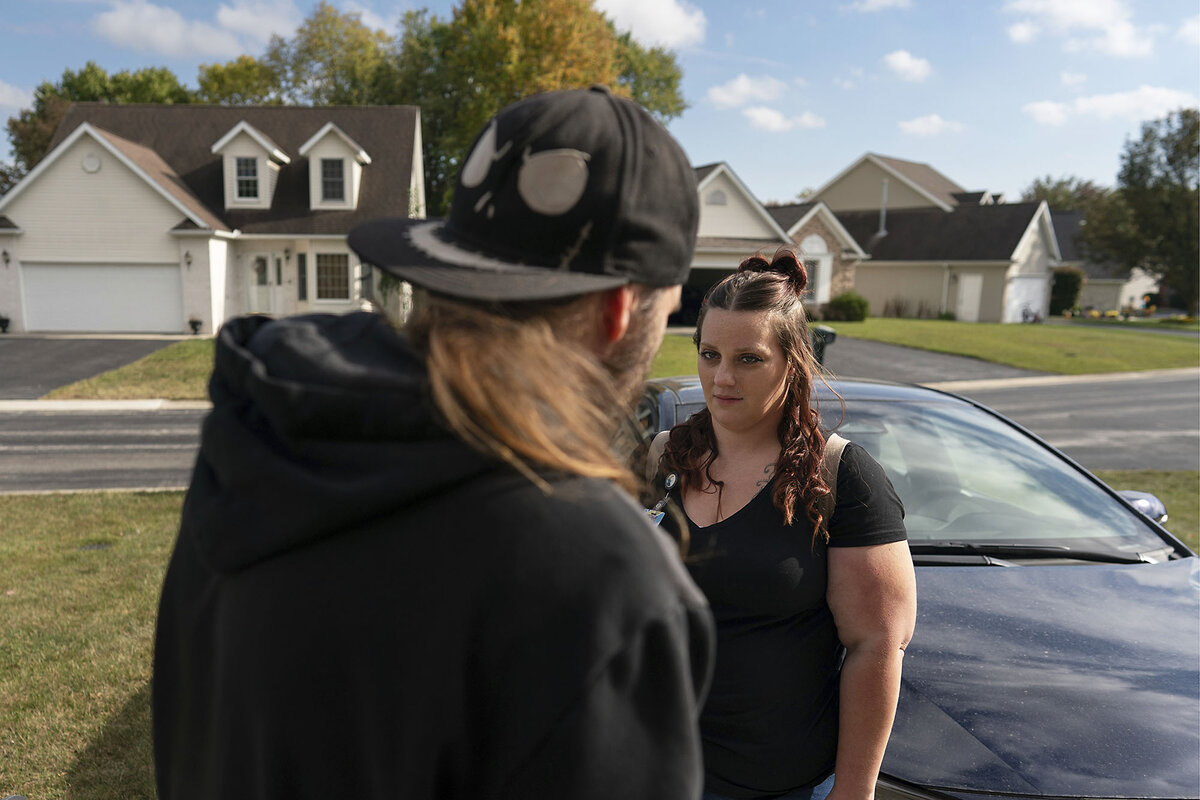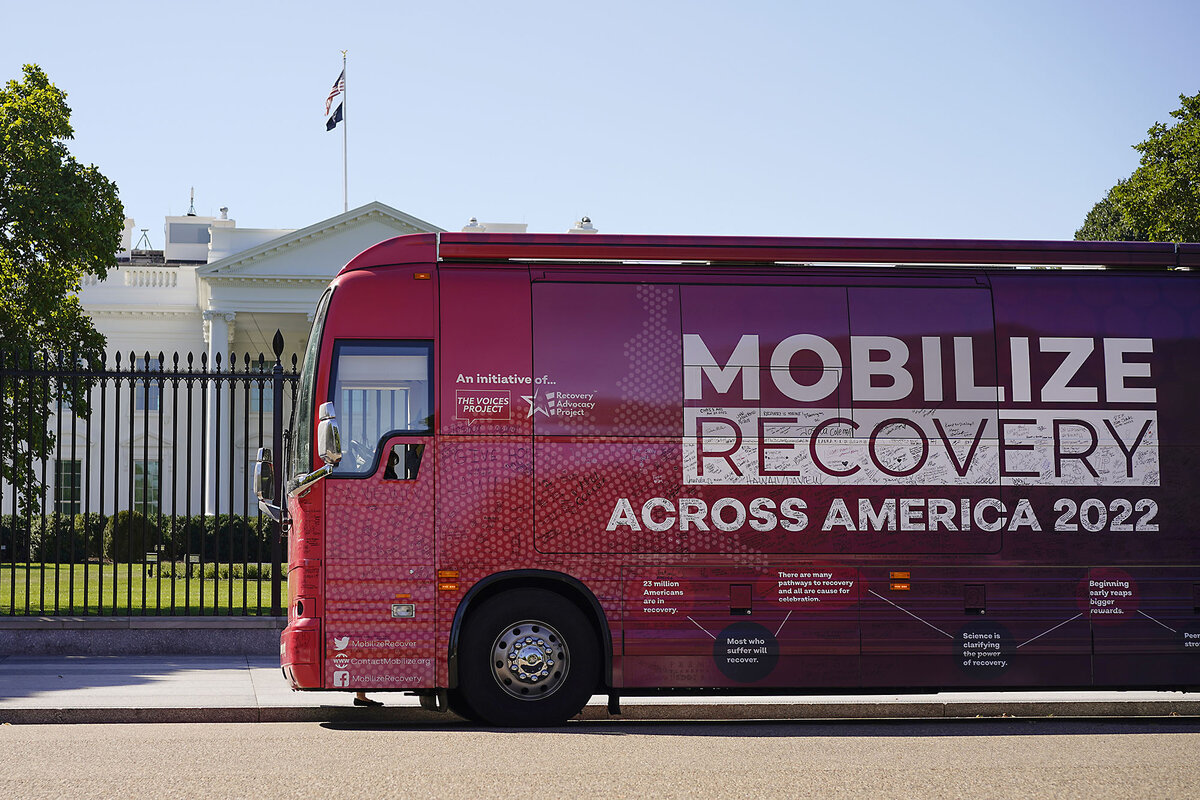Can $18 billion in opioid settlement funds turn an overdose tide? Ask North Carolina.
Loading...
| DURHAM, N.C.
The opioid crisis has been ravaging the United States for decades, costing states millions of dollars in resources and claiming tens of thousands of lives each year.
But is the tide about to turn? Over the next 18 years, local, state, and tribal governments will receive a total of $18 billion to be spent on abating America’s opioid epidemic. The funds, divided among jurisdictions, are the product of legal settlements with opioid manufacturers and distributors.
The money could be a defining tool in nationwide efforts to reduce opioid-related deaths – if funds are spent wisely.
Why We Wrote This
To address America's opioid crisis, health care experts recommend a priority on preventing fatal overdoses in the short term while helping people become sober over time. Money from legal settlements may allow states to do just that.
Sapience won the hard way
While these settlements are potentially lifesaving, they’re not unprecedented. But the precedent – a settlement with tobacco companies in the late 1990s – is more cautionary tale than road map for policymakers across the U.S., particularly in North Carolina.
The Tar Heel State was one of 46 states that negotiated the tobacco Master Settlement Agreement in 1998, which required tobacco companies to pay states billions of dollars annually to help curb tobacco addiction, particularly among youth. But while the funds have been disbursed and cigarette use has declined, the MSA is broadly considered a failure.
With no settlement language requiring states to spend the funds on reducing tobacco addiction, they began using the money to plug budget holes or meet other needs. In North Carolina, the heart of America’s tobacco industry and now the state with the 12th-highest rate of opioid deaths, local leaders are hoping to avoid those mistakes with the new opioid settlement funds.
National experts are cautiously optimistic.
It’s “a once-in-a-generation opportunity to change the arc of this crisis,” says Brandon Marshall, professor of epidemiology at the Brown University School of Public Health who has advised Rhode Island on fund distribution. “We have to get it right.”
Lessons from history
Tobacco’s roots in North Carolina are deep – 200 years deep – and nowhere are those ties stronger than in Durham.
Nicknamed “Bull City” – not for cattle, but for a late-1800s advertising campaign by the Blackwell Tobacco Co. – Big Tobacco’s fingerprints are hard to miss. A thin, Lucky Strike-branded smokestack towers over Durham like a supersize cigarette.
But like most other American cities, Durham has grappled with a different public health crisis in recent years. Drug overdose deaths in Durham County increased each year between 2018 and 2022, according to state data. The county also has one of the highest rates of illicit drug overdose deaths in the state.
The county has already begun approving uses for the opioid settlement funds, and local officials say they are optimistic about positive change over the next two decades.
“We have the best settlement of any state in the United States,” says Wendy Jacobs, a Durham County commissioner.
The options for spending the funds “are evidence-based,” she adds, “and they’re not being diverted like [with] the tobacco settlement.”
In North Carolina, the tobacco MSA funds were partly intended to compensate tobacco farmers for losses and help them transition to new crops. The farmers were given access to $42 million “for modernization and marketing,” according to a 2014 New York Times report. In fiscal year 2021, the state allocated just a tiny fraction – $1.9 million of the $447.4 million it received in settlement funds and tobacco tax revenue – to tobacco use prevention, according to Truth Initiative, a public health nonprofit created as part of the MSA.
North Carolina is far from the only state that has used tobacco MSA funds in this manner.
While the state attorneys general who negotiated the settlement were clear that they wanted the award to address tobacco use, current state legislatures “can’t bind future state legislatures” on how they use funding, says Micah Berman, public health law expert at Ohio State University who has researched the tobacco MSA.
Minnesota, for example, launched an initiative to prevent youth tobacco use in 2000, budgeting $20 million a year for it. But the state Legislature dramatically cut funding for the initiative in 2003.
Just a few years after agreeing to the tobacco settlement, North Dakota had allocated almost half of its settlement funds for infrastructure projects, according to a 2001 report from the U.S. Government Accountability Office. In 2019, the state received $53.6 million from the settlement but allocated just over 10% – only $5.8 million – to tobacco addiction prevention, according to Truth Initiative.
By contrast, most current opioid settlements require that funds be spent on drug addiction treatment and prevention, though they give states flexibility in how they do that.
Two options in Tar Heels State
In North Carolina, for example, counties and municipalities get 85% of the $1.5 billion the state will receive over the next 18 years. The state is offering two broad options for how the money can be spent.
Option A allows localities to fund “evidence-based, high-impact strategies” drawn up by the state. With Option B, a local government can design its own funding plan.
Durham County has chosen Option A for the nearly $22 million it expects over the next two decades. The settlement money “has been a way for us to actually continue, and build on, some things that we’ve already been doing,” says Commissioner Jacobs, who helps lead a county task force formed in 2018 to help address the opioid crisis.
For example, a Durham County program that connects people who’ve recently overdosed with a drug overdose survivor was close to running out of grant funding. Over $300,000 of settlement funds have now been approved to keep the program running. Settlement money will also fund naloxone vending machines, which will distribute a free nasal spray that reverses opioid overdoses, in the county detention center, public health department, and central library.
Durham County officials also hope to purchase a machine that can allow drug users to quickly check the composition of their supplies on-site. According to the U.S. Drug Enforcement Administration, the “primary driver” of fatal overdoses appears to be more potent opioids like fentanyl being mixed into other drugs.
Nearby Greensboro has had this machine since 2021. Donated to the North Carolina Survivors Union, the machine uses an infrared light to scan drug samples, revealing in 15 minutes what other drugs may be hidden inside.
Despite being one of the state’s most active addiction treatment organizations, it has received little funding from the county.
“We’ll either close or we’ll get funding,” says Louise Vincent, the executive director of the organization.
“It’s been really upsetting,” she adds. “We’ve got some really cool stuff going on.”
Transparency and accountability
North Carolina is among the states being most transparent about how it is using opioid settlement funds. An online dashboard details which counties have allocated funds and what for, from Alexander County’s $212,000 for a postoverdose response team to Yancey County’s $32,000 for reentry programs.
But there are echoes of the tobacco settlement failures in how some states are managing their opioid funds.
Lack of transparency remains a problem. Ten states report fewer than half of their opioid settlement fund expenditures, according to Opioid Settlement Tracker. Others, while not technically misusing settlement funds, are spending the money in ways that concern addiction experts – including funding law enforcement and abstinence-only programs.
But policing how states spend settlement money is not easy.
“It would take a pretty egregious misuse of funds to spur [some] kind of enforcement action,” says Brown University’s Dr. Marshall. “There’s a difference between inappropriate and ineffective use of funds.”
Many experts and health organizations – including the American Society of Addiction Medicine and the American Medical Association – recommend that states prioritize funding harm reduction. These programs aim to prevent fatal overdoses in the short term while helping people become sober over time.
Jennifer Carroll, a North Carolina State University assistant professor who researches substance use, drug overdose, and drug policy, has been happy to see Durham County do just that.
“That doesn’t mean necessarily I agree with the way every single penny is [being] spent ... but I think here we’re doing pretty OK,” says Dr. Carroll. “We really need to be doing what we know works and knocking off the stuff that we know hurts.”
Editor's note: This story has been updated to correct the name of Louise Vincent.









